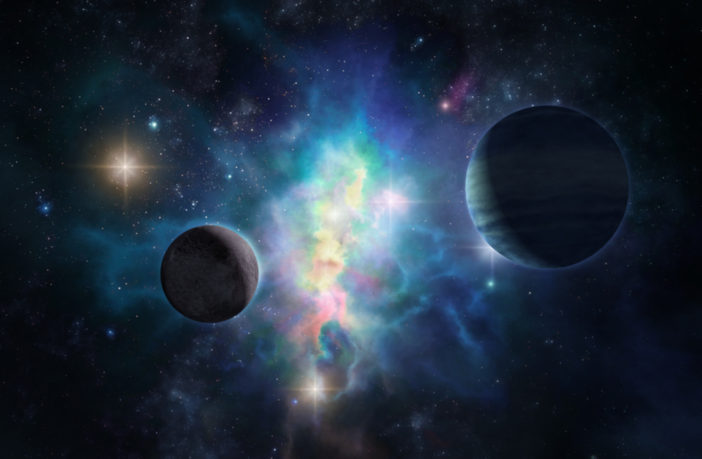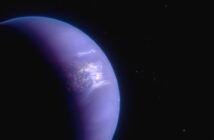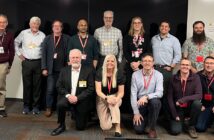After years of preparation and anticipation, researchers, including experts from the OU, have announced the first clear evidence for carbon dioxide in the atmosphere of a planet orbiting a distant star.
The findings came from the NASA/ESA/CSA observatory JWST, which captured astonishingly detailed evidence through the atmosphere of a hot gas giant, WASP-39 b, 700 light-years away.
Previous observations from other telescopes revealed the presence of water vapor, sodium, and potassium in the planet’s atmosphere. JWST’s unmatched infrared sensitivity has now confirmed the presence of carbon dioxide on this planet as well, which can help us better understand the planet’s origin.
The results, published today in Nature, are indicative of JWST’s ability to spot key molecules like carbon dioxide in a wide variety of exoplanets – including smaller, cooler, rocky planets – providing insights into the composition, formation, and evolution of planets across the galaxy.
Dr Joanna Barstow, Ernest Rutherford Research Fellow, and Agnibha Banerjee, Research Student at the OU worked as part of the Early Release Science Team to support the research.
The Transiting Exoplanet Community Early Release Science (ERS) Team is an open, community-led programme to provide the most comprehensive and thorough analysis of JWST data for some of the earliest results. Dr Barstow and Mr Banerjee contribute expertise through an atmospheric modelling technique called ‘spectral retrieval’, which will be used to get a deeper and more detailed insight into the results presented in this research.
Dr Barstow highlighted the significance of the findings:
“This is our first glimpse of what a powerful tool JWST is for studying the atmospheres of exoplanets. Access to the infrared part of the spectrum has supported some of our predictions for this particular planet, but it is also turning up some surprises – exactly what we were hoping for!
“Working as part of the ERS Team has been an enormous privilege, and I hope that the spirit of collaboration that this has fostered within the community will continue.”
Mr Banerjee added:
“This is the first of many more discoveries to come and I’m excited to be living in such a time.
“As a post graduate researcher, it is also very encouraging to be part of a community as inclusive as the ERS Team.”
Filtered Starlight
Transiting planets like WASP-39 b can provide researchers with ideal opportunities to probe planetary atmospheres. During a transit, some of the starlight is eclipsed by the planet completely (causing the overall dimming) and some is transmitted through the planet’s atmosphere.
Because different gases absorb different combinations of colours, researchers can analyse small differences in brightness of the transmitted light across a spectrum of wavelengths to determine exactly what an atmosphere is made of.
First Clear Detection of Carbon Dioxide
The research team used JWST’s Near-Infrared Spectrograph (NIRSpec) for its observations of WASP-39 b.
No observatory has ever measured such subtle differences in brightness of so many individual colours across the 3 to 5.5-micron range in an exoplanet transmission spectrum before. Access to this part of the spectrum is crucial for measuring abundances of gases like water and methane, as well as carbon dioxide, which are thought to exist in many different types of exoplanets.
Early Release Science
This NIRSpec prism observation of WASP-39 b is just one part of a larger investigation that includes observations of the planet using multiple instruments, as well as observations of two other transiting planets. The investigation, which is part of the Early Release Science program, was designed to provide the exoplanet research community with robust JWST data as soon as possible.
Dr Barstow added:
“This is just the beginning. We have more data to come for this planet and I am very excited to dig into it in more detail with the rest of the team.”



